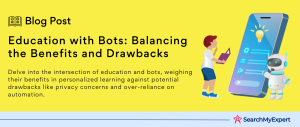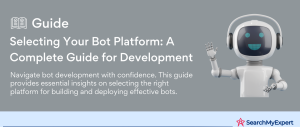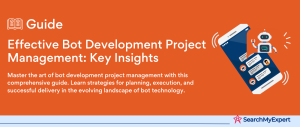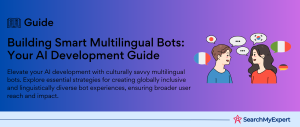Social Media Bots: Understanding Their Role and Impact
In the ever-evolving landscape of social media, the role of bots has become increasingly significant. This introduction delves into the concept of social media bots, shedding light on their purpose, benefits, and the ethical considerations surrounding their use.
Defining Social Media Bots
Social media bots are automated software programs designed to interact on social media platforms. These bots can perform a variety of tasks, ranging from posting content to engaging with users. Their design often aims to mimic human behavior, making them a unique blend of technology and social interaction. The primary purpose of these bots is to automate repetitive tasks, increase engagement, and manage various aspects of social media presence without the need for constant human intervention.
The benefits of social media bots are multifaceted. They can enhance user engagement, provide quick responses to inquiries, and help in gathering and analyzing data on user interactions and preferences. These capabilities make them invaluable tools for businesses and individuals looking to optimize their social media strategies.
The Current Landscape of Social Media Bots
The prevalence of bots varies across different social media platforms. On platforms like Twitter and Facebook, bots can be used for a range of purposes, from broadcasting news updates to automating customer service responses. Instagram bots often focus on increasing followers and engagement, while LinkedIn bots might be used for networking and professional outreach.
Each platform has its unique ecosystem of bots, and their functionality can vary greatly. From simple automated accounts to sophisticated AI-driven bots, the spectrum is vast and constantly evolving. This diversity underscores the adaptability and utility of bots in various social media contexts.
Ethical Considerations in Bot Development
The development and deployment of social media bots must be approached with ethical considerations in mind. The potential for misuse, such as spreading misinformation or manipulating public opinion, is a significant concern. Developers and users of bots need to ensure that their actions align with ethical standards and platform policies.
Responsible bot development involves transparency about the bot’s nature and purpose, adherence to privacy laws, and the avoidance of deceptive practices. It’s crucial to strike a balance between leveraging the benefits of bots and maintaining the authenticity and integrity of social media interactions.
Identifying Your Bot’s Role in Social Media Engagement
To effectively implement a social media bot, it is crucial to have a clear understanding of its intended role. This involves identifying the target audience, defining the bot’s purpose and functionality, and selecting the most suitable social media platform.
Defining Your Target Audience
The first step in designing a social media bot is to identify the specific user group you want to target. Understanding your audience is key to ensuring your bot’s interactions are relevant and effective. Consider factors like demographics (age, gender, location), interests, online behavior, and the social media platforms they frequent. For instance, if your target audience is young adults interested in tech, platforms like Twitter or Reddit might be more appropriate than LinkedIn.
Tailoring your bot to your audience’s preferences and behaviors will increase engagement and effectiveness. For instance, a bot targeting tech enthusiasts might focus on providing the latest industry news and answering tech-related queries.
Purpose and Functionality of Your Bot
Next, determine the primary role and tasks your bot will perform. Social media bots can serve a variety of purposes:
- Customer Service:
These bots can answer FAQs, provide product information, and assist with order tracking and complaints. - Community Engagement:
Bots can help in fostering community interactions by initiating and participating in discussions, conducting polls, or organizing events. - Information Dissemination: For news agencies or informational websites, bots can automatically share updates, breaking news, or specific content based on user preferences.
Deciding the functionality of your bot is critical. A customer service bot should be programmed to understand and respond to common customer inquiries efficiently, while a community engagement bot should be adept at encouraging interactions in a more casual, conversational tone.
Choosing the Right Social Media Platform
The effectiveness of a bot also hinges on choosing the most relevant social media platform, which should align with both the target audience’s preferences and the bot’s functionality.
- Facebook:
Ideal for a wide demographic range. Useful for customer service and community engagement due to its vast user base and interactive features. - Twitter: Great for real-time engagement and information dissemination. Suitable for news updates, customer service, and brand interaction.
- Instagram: Best for a visually-oriented audience and brands. Good for engagement through visual content and stories.
- LinkedIn:
Perfect for professional networking, B2B interactions, and corporate communication.
Selecting the right platform ensures that your bot reaches the right audience and operates in an environment conducive to its intended role. It’s essential to align the platform’s features and audience with your bot’s capabilities for optimal performance.
Designing and Building an Effective Social Media Bot
Creating a social media bot involves several technical and design considerations. From choosing the right development tools to implementing Natural Language Processing (NLP) for better interactions, each step is crucial in building a bot that is both functional and user-friendly.
Technical Considerations for Bot Development
When developing a social media bot, several technical aspects need to be considered:
- Development Language:
Selecting the right programming language is fundamental. Popular choices include Python, due to its simplicity and robust libraries for AI and NLP, and JavaScript, for its efficiency and widespread use in web development. - Framework: The framework provides a foundation for your bot’s operations. For instance, Microsoft Bot Framework and Dialogflow offer comprehensive tools for building and deploying bots.
- API Integration:
Your bot will need to interact with social media platforms, which requires API integration. Each platform (like Twitter, Facebook, or LinkedIn) offers specific APIs for automation and data retrieval. Ensure that the chosen APIs align with your bot’s functionality and the platform’s policy.
Understanding these technicalities is crucial for developing a bot that is both efficient and compliant with platform standards.
Implementing Natural Language Processing (NLP)
Natural Language Processing is at the heart of making bots intelligent and interactive:
- Understanding User Intent: NLP enables your bot to comprehend user queries and statements. Techniques like tokenization, sentiment analysis, and entity recognition help in parsing and understanding user inputs.
- Generating Appropriate Responses: Beyond understanding, your bot should respond in a manner that feels natural and helpful. NLP facilitates this by generating contextually relevant and coherent responses, enhancing user experience.
Incorporating NLP not only improves user interaction but also ensures that your bot can handle a wide range of queries effectively.
Designing User Interface and Interaction Flow
The user interface (UI) and interaction flow are crucial in determining how users perceive and engage with your bot:
- User Interface: The UI should be intuitive and straightforward. For text-based bots, this involves clear and readable fonts, a pleasing color scheme, and an easy-to-navigate layout. For voice-based bots, ensure a clear and friendly tone.
- Interaction Flow: The flow of interaction should be logical and seamless. Users should easily understand how to start a conversation, ask questions, and receive responses. Incorporating features like quick replies or menus can guide users effectively.
Ensuring Excellence in Your Social Media Bot: Testing and Refining
Developing a social media bot is an iterative process that involves thorough testing and refinement. This step is crucial in ensuring that the bot functions accurately and provides a positive user experience. The process encompasses internal testing, beta testing, and ongoing monitoring and optimization.
Conducting Internal Testing
The first phase in the testing process is internal testing, which involves several key aspects:
- Functionality Testing:
This ensures that the bot performs all its intended functions correctly. Test various scenarios, including standard queries, unusual requests, and edge cases to assess the bot’s responses and actions. - Accuracy Testing: It’s essential to verify the bot’s ability to understand and respond to user inputs accurately. This includes testing the effectiveness of NLP in interpreting various user intents.
- User Experience Testing:
Evaluate the bot’s ease of use, response time, and overall interaction quality. The goal is to ensure that users find the bot helpful, engaging, and easy to interact with.
Internal testing helps identify and rectify any issues before the bot is exposed to real users.
Engaging in Beta Testing
After internal testing, beta testing with a limited user group can provide invaluable insights:
- Gathering User Feedback:
Select a small, diverse group of users to test the bot. Encourage them to provide honest feedback on their experience. - Refining Bot Performance: Use the feedback to refine the bot’s responses, interaction flow, and functionalities. Pay attention to users’ suggestions and complaints to identify areas for improvement.
- Behavioral Analysis:
Observe how users interact with the bot and make note of any unexpected or problematic interactions. This can help in fine-tuning the bot’s behavior.
Beta testing helps in understanding how the bot performs in real-world scenarios and what users expect from it.
Ongoing Monitoring and Optimization
After deployment, continuous monitoring and optimization are key to maintaining an effective bot:
- Performance Monitoring: Regularly review the bot’s performance metrics, like response accuracy, user engagement rates, and user satisfaction.
- User Feedback Analysis:
Continuously gather and analyze user feedback. User suggestions, complaints, and queries can provide direct insights into what works well and what needs improvement. - Adaptive Improvement: Based on the collected data and feedback, continually refine and update the bot. This includes updating NLP models, refining response algorithms, and enhancing user interaction features.
Ongoing monitoring and optimization ensure that the bot remains effective, relevant, and engaging over time, adapting to changing user needs and preferences.
Deploying and Managing Your Social Media Bot for Optimal Performance
Successfully deploying and managing a social media bot involves navigating platform-specific requirements, ensuring scalability and security, and leveraging analytics for continuous improvement. Each of these components plays a vital role in the smooth operation and effectiveness of the bot.
Complying with Platform-Specific Requirements
Before deploying your bot, it is crucial to understand and adhere to the specific guidelines and regulations of the chosen social media platform:
- Review Platform Policies:
Each social media platform has its own set of rules regarding bots. These policies may cover aspects like frequency of posts, types of interactions, and data usage. Ensuring compliance with these policies is essential to avoid penalties or bans. - API Usage and Limitations:
Familiarize yourself with the API usage limits and requirements. Platforms often have limitations on the number of requests a bot can make within a certain timeframe. - User Consent and Transparency:
Some platforms require bots to disclose their automated nature to users. This transparency builds trust and aligns with ethical best practices.
Understanding and complying with these requirements ensures that your bot operates within the bounds of the platform’s standards, maintaining its functionality and reputation.
Ensuring Scalability and Security
As your bot interacts with users, scalability and security become increasingly important:
- Scalability:
Ensure that your bot can handle increased traffic and user interactions. This may involve optimizing code, utilizing cloud-based services for hosting, and preparing for peak usage times. - Security Measures: Implement robust security measures to protect both the bot and the users interacting with it. This includes safeguarding user data, preventing unauthorized access, and regularly updating security protocols.
A scalable and secure bot is essential for maintaining performance and user trust, especially as user interaction grows.
Utilizing Analytics and Reporting
To evaluate the bot’s success and identify areas for improvement, tracking key metrics and user interactions is vital:
- Analytics Tools:
Use analytics tools to track metrics like engagement rates, user satisfaction, response accuracy, and conversion rates. - User Interaction Analysis: Monitor how users interact with the bot. Look for patterns in the queries received and the responses given. This can provide insights into user needs and preferences.
- Identifying Improvement Areas: Use the data gathered to identify areas for improvement. This might include refining the NLP model, adjusting the interaction flow, or expanding the bot’s capabilities.
Regularly reviewing these analytics and reports allows for data-driven decision-making, helping to continuously refine and improve the bot’s performance.
Maximizing the Impact of Your Social Media Bot: Measuring Success and Driving Improvements
Evaluating the success and impact of a social media bot is a crucial phase in its lifecycle. By defining clear success metrics, tracking and analyzing user interactions, and continuously optimizing based on data, you can ensure your bot is not just functioning, but thriving and delivering value.
Defining Success Metrics
To effectively measure the success of your social media bot, it’s essential to set specific metrics that align with the bot’s purpose and the target audience:
- User Engagement:
Track metrics such as number of interactions, frequency of user return, and overall engagement time. High engagement rates often indicate that users find the bot useful and enjoyable. - Customer Satisfaction:
For customer service bots, satisfaction ratings, resolution rates, and response times are key indicators. These metrics reflect how effectively the bot addresses user needs. - Sales Conversion: If the bot is part of a sales strategy, track metrics like conversion rates, lead generation effectiveness, and the impact on overall sales.
- Content Reach: For bots aimed at content distribution, measure reach, shares, and content interaction.
Aligning these metrics with your bot’s objectives provides a clear picture of its effectiveness and areas that need improvement.
Tracking and Analyzing Data
Utilizing analytics tools is vital in understanding how users interact with your bot and gauging its performance:
- Analytics Tools:
Employ tools that can track user interactions, dissect engagement patterns, and provide detailed reports on bot performance. - User Behavior Analysis: Analyze how users are interacting with the bot. Look for trends in questions asked, the type of content interacted with, and any common issues users face.
- Sentiment Analysis:
Use NLP tools to assess the sentiment of user interactions. This can give insights into user satisfaction and areas where the bot may be falling short.
Tracking and analyzing this data provides a wealth of information that can guide further improvements.
Reporting and Optimization
Regular analysis and adaptation based on the collected data are key to enhancing your bot’s impact:
- Regular Reporting:
Generate regular reports detailing performance metrics, user feedback, and any identified trends. - Data-Driven Optimization:
Use the insights from reports to refine the bot’s responses, improve functionality, and address user needs more effectively. - Iterative Improvement: Treat the bot as an evolving entity. Continuously seek ways to enhance its interaction quality, broaden its capabilities, and make it more user-friendly.
The Future of Social Media Bots: Trends, Impact, and Ethical Framework
As we look towards the future, social media bots are set to become even more integrated into our digital interactions. This section explores the potential advancements in AI and NLP that could shape the future of bot development, the broader societal and ethical implications of their deployment, and concludes with key insights and opportunities for the development of these digital entities.
Emerging Trends in AI and NLP
Advancements in AI and NLP are expected to significantly influence the evolution of social media bots:
- Enhanced AI Capabilities:
Future bots may utilize more advanced AI algorithms, enabling better decision-making, problem-solving, and predictive analytics. - Sophisticated NLP Techniques:
Progress in NLP will likely allow bots to understand and process natural language more effectively, leading to more nuanced and context-aware interactions. - Emotional Intelligence:
The integration of emotional intelligence in bots could result in more empathetic and personalized user experiences. - Multimodal Interactions:
Future bots might combine text, voice, and visual elements, offering more dynamic and engaging interaction modes.
These advancements promise to make social media bots more sophisticated, effective, and human-like in their interactions.
Social Impact and Ethical Considerations
The widespread deployment of social media bots also raises important societal and ethical questions:
- Employment and Automation:
As bots become more capable, the impact on jobs traditionally done by humans, especially in customer service, will need careful management. - Data Privacy and Consent: Ensuring user privacy and data security in an era of increasingly intelligent bots will be paramount.
- Misinformation and Bias:
The potential for bots to spread misinformation or exhibit biased behavior calls for rigorous standards and ethical guidelines in bot development and deployment.
Conclusion:
The landscape of social media bots is on the brink of transformative changes, propelled by rapid advancements in AI and NLP. As these digital entities become more sophisticated, they hold the potential to revolutionize the way we interact on social media platforms. However, this evolution also brings to the forefront critical ethical and societal considerations, such as data privacy, employment impacts, and the spread of misinformation. It is imperative for developers, users, and regulators to collaborate in shaping a future where social media bots not only drive engagement and efficiency but also adhere to ethical standards, ensuring a positive and secure digital environment for all.
As we embrace these technological advancements, the key lies in striking a balance between innovation and responsibility, ensuring that the bots of tomorrow enhance our digital experiences while safeguarding the core values of trust and authenticity in the social media landscape.
Transform your digital workforce with Bot Development Service Firms.
Table of Contents
Toggle






